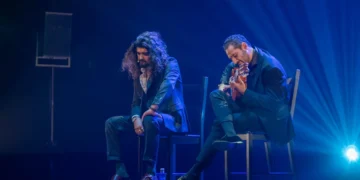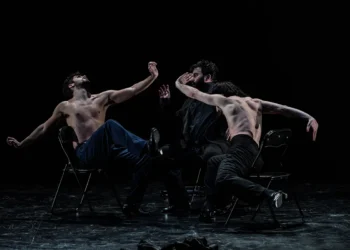|
Festival Suma Flamenca CARMEN LINARES June 9th, 2012 – Teatros del Canal |
||||||
|
Carmen Linares: cante. Eduardo Pacheco and Salvador Gutiérrez: guitar. Pablo Suárez: piano. Kike Terrón: percussion. Ana González and Rosario Amador: jaleos, chorus and palmas. Javier Barón: dance. TO BE OR NOT TO BE We said it the other day, sometimes flamenco and its interpreters need to be rescued. From themselves. The greatest enemy of art is monotony, drudgery, predictability. Contrived interpretations dressed up as profound and offered as sincere. That can be suffocating, and it fills an artform that claims to be pure and true, with sludge. It’s just kidding ourselves. But I digress… This was one of the three or four major components left of this survival version of the Suma festival. And unlike the others, this was the first time it was presented in Madrid. It wasn’t an out-and-out premiere, because Carmen Linares has been performing Remembranzas over a year now, but it was the presentation to Madrid’s flamenco followers. This is her stomping ground, and this woman tends always to be up to the task at hand. This is a person who is capable of working two or three shows at once, and for this we are grateful. Carmen Linares has the need to offer a certain continuity, it’s part of her character and that gives an added shine to what she does. It’s just a matter of being that way or not. And aside from the novelty, the dedication. Nearly two hours of show, and hour and a half of singing, handily resolved that dilemma of whether to be or not to be. Like I said, it’s her way. But just as happened the previous year, she had a hard time getting started. Or so it seemed. Carmen’s voice doesn’t reach cruising speed until she passes the halfway point of each recital. In tangos, she shared the task of singing nearly as much as her palmas backup person, and in the taranta, cartagenera and soleá por bulería it was clear other resources were carrying her along. The carefully chosen verses, and the excellent phrasing and knowledge of Salvador Gutiérrez’ guitar-playing, ever on the rise. With the appearance of Pablo Suárez, and a wink in three acts to Miguel Hernández, the register toned down, not much voice was required, so in the end, in the toná and debla with Suárez beating out rhythm on a simulated anvil, Carmen Linares showed the temperature was just right. Then came the seldom-heard fandangos de Alosno, “Puñal Dorado”, and the powerful ending with all the force that had been lacking at the beginning. The polyrhythmic “Milonga del Forastero” was far better than the recorded version, a large selection of “women’s” bulerías and the closing of siguiriyas with dance. Because Javier Barón also came to rescue flamenco. A committed dancer who uses his whole body as a single unit. His contribution in the alegrías was important, and this closing was moving. Javier joined Carmen and her people and also opened a credit line in the all too often closed and inward-looking flamenco circuit. But there was a surprise. A tribute to Madrid in the form of a song by Sabina. The most flamenco version possible of “Pongamos que Hablo de Madrid” for a straightforward fiesta ending. And so it went, an artist who can never be accused of being a conformist. Rescuing flamenco is not something that anyone can do. It’s the dilemma of to be or not to be. Video:
|





























